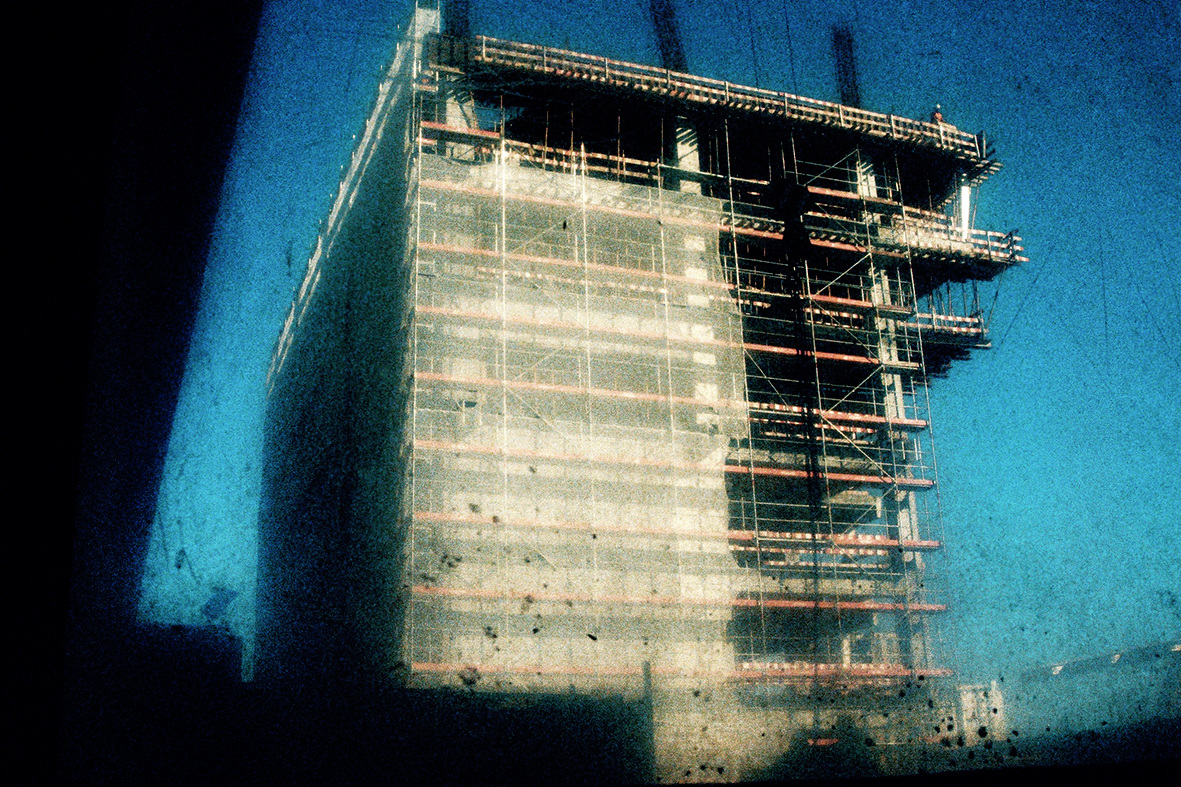Prisma Bahnhof
2016






The project explores the city of Berlin taken through the following surface train stations: S-Bahnhof Friedrichstraße, Potsdamer Platz, Alexanderplatz and Bornholmer Strasse. These stations were once interrupted or terminated due to their localization at the border between east and west. Today the train resumed its normal route, however, it left many stories to tell. All these historical facts are parallel to the present proposal, however, the pictures are not fully descriptive. Instead, they approach empirical observations of today's life.
S-Bahnhof Potsdamer PlatzSituated on the border between East and West, the station was only operational as a terminal station on the west side. The S-Bahn North-South was fully closed. This line suffered the peculiarity of its geography between the two sides of the city, giving rise to several "Geisterbahnhöfe" or ghost stations. The station reopened on March 3, 1992. The whole area around Potsdamer Platz was rebuilt in the 90s, bringing the concept "City for the XXI century”.
Friedrichstrasse
Although used by Western lines, and located in East Berlin territory, it was not closed. Border troops of East Germany split the station into two completely isolated areas under armed control. It served as a transfer point between several S-Bahn lines.With appropriate visas, western citizens could enter East Berlin here. Due to station’s enourmous traffic an outbuilding in the north square of the station was constructed used for border crossings.
Here there were many tearful farewells, giving rise to the nickname Tränenpalast, the Palace of Tears. Today the Palace of Tears became a museum.
S-Bahn Bornholmer StrasseThe S-Bahn station Bornholmer Strasse was one of the most acclaimed ghost station. It is located beneath Bösebrücke bridge. Trains from West Berlin passed here without stopping and East Berlin crossed the same station on a different track. On the night of November 9, 1989, thousands of East Berliners and GDR citizens manifested at the bridge entrance, which was located at a checkpoint, demanding entry to West Berlin. At 21:20h local time, guards were the first to open the checkpoint and allow the free passage of people to West Berlin. The event marked the beginning of the fall of the Berlin Wall. The station reopened on 12 December 1990.
Alexanderplatz
Although it is a central station, it is located in the eastern part of Berlin, and it was a very important center of the east. The U8 line platform was separated from the rest of the station, becoming one of the acclaimed ghost stations because it established the passage to the west side of town .On the 4th of November 1989, an enormous manifestation took place on Alexanderplatz, and gathered about half a million protesters that demanded the reunification of Germany. This event anticipates the fall of the wall on November 11th. The U8 line was reopened on July 1st, 1990 and the station resumed its regular circulation east / west.
These stations belong to a very particular chapter in the History of Berlin. Thus they have a special identity, once called “Geisterbahnhof”. However, this identity is not visible anymore. It became concealed over time and the circumstances of the city change day by day. PrismaBahnhof appropriates an optical prisma as a correlation among different refractions of time - the swing between the past and the present. The spectrum of light mirrors the fading of reality, which leads to an indeterminate future. History will be written again.
S-Bahnhof Potsdamer PlatzSituated on the border between East and West, the station was only operational as a terminal station on the west side. The S-Bahn North-South was fully closed. This line suffered the peculiarity of its geography between the two sides of the city, giving rise to several "Geisterbahnhöfe" or ghost stations. The station reopened on March 3, 1992. The whole area around Potsdamer Platz was rebuilt in the 90s, bringing the concept "City for the XXI century”.
Friedrichstrasse
Although used by Western lines, and located in East Berlin territory, it was not closed. Border troops of East Germany split the station into two completely isolated areas under armed control. It served as a transfer point between several S-Bahn lines.With appropriate visas, western citizens could enter East Berlin here. Due to station’s enourmous traffic an outbuilding in the north square of the station was constructed used for border crossings.
Here there were many tearful farewells, giving rise to the nickname Tränenpalast, the Palace of Tears. Today the Palace of Tears became a museum.
S-Bahn Bornholmer StrasseThe S-Bahn station Bornholmer Strasse was one of the most acclaimed ghost station. It is located beneath Bösebrücke bridge. Trains from West Berlin passed here without stopping and East Berlin crossed the same station on a different track. On the night of November 9, 1989, thousands of East Berliners and GDR citizens manifested at the bridge entrance, which was located at a checkpoint, demanding entry to West Berlin. At 21:20h local time, guards were the first to open the checkpoint and allow the free passage of people to West Berlin. The event marked the beginning of the fall of the Berlin Wall. The station reopened on 12 December 1990.
Alexanderplatz
Although it is a central station, it is located in the eastern part of Berlin, and it was a very important center of the east. The U8 line platform was separated from the rest of the station, becoming one of the acclaimed ghost stations because it established the passage to the west side of town .On the 4th of November 1989, an enormous manifestation took place on Alexanderplatz, and gathered about half a million protesters that demanded the reunification of Germany. This event anticipates the fall of the wall on November 11th. The U8 line was reopened on July 1st, 1990 and the station resumed its regular circulation east / west.
These stations belong to a very particular chapter in the History of Berlin. Thus they have a special identity, once called “Geisterbahnhof”. However, this identity is not visible anymore. It became concealed over time and the circumstances of the city change day by day. PrismaBahnhof appropriates an optical prisma as a correlation among different refractions of time - the swing between the past and the present. The spectrum of light mirrors the fading of reality, which leads to an indeterminate future. History will be written again.
Manchas Urbanas
2013









Visual exploration of two surface subway stations, located between the central city and the suburbs - Senhor Roubado and Campo grande.
The fact that these stations are located on the surface and in-between inner and outer city, gives them a special interest as as contemplative landscape.
The images were developed with a experimental crossed process and show the plasticity of the outstations through the dirty glass windows.


